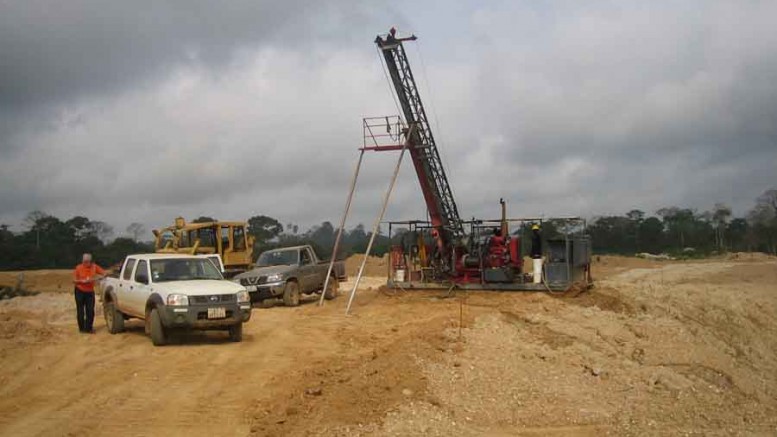At first glance Vancouver-based Asante Gold (ASE-V) appears similar to a number of junior explorers hoping to make the next discovery in Ghana. Take a closer look, however, and one difference emerges: Asante is the next project for Ghana-veteran and former PMI Gold (PMV-T, PVM-A) CEO Douglas MacQuarrie.
PMI made headlines in mid-December when it agreed to merge with fellow Ghana-focused gold junior Keegan Resources (KGN-T, KGN-X) and form a substantial developer with US$343 million in cash and some 7 million ounces in measured and indicated gold resources in two projects.
MacQuarrie has been exploring West Africa for the past 18 years, and raised over US$45 million during his tenure at PMI. He is credited as a key player in securing exploration rights and developing PMI’s flagship Obotan gold deposit in southwestern Ghana, which holds 44.8 million measured and indicated tonnes grading 2.16 grams gold per tonne for 3.11 million contained oz.
Shortly after he resigned as managing director of PMI in April 2011, MacQuarrie wrapped up a purchase agreement for a 22-sq.-km slice of land called the Fahiakoba concession along the Ashanti-Ayanfuri gold trend in central Ghana.
Fahiakoba is an interesting piece of mineral real estate, with Perseus Mining’s (PRU-T) multi-million ounce Edikan gold project lying 6 km southwest and AngloGold Ashanti’s (AU-N) long-running Obuasi gold mine sitting 22 km to the northeast. Under the agreement Asante paid US$52,000 and agreed to spend US$1 million in exploration over a five-year term subject to a 3% net smelter return royalty (NSR).
Though surface mining of buried channels along the nearby Ofin River is ongoing, no modern exploration techniques have been attempted at Fahiakoba. Since at least 70% of the property is covered by transported alluvial material, Asante relied on two helicopter-flown geophysical surveys to outline structural trends and conductive zones — a strategy that has a history of success in Ghana.
The company found roughly 20 km of favorable shear zones along its concession, and began wide-spaced scout drilling in early 2012. Asante also punched 399 shallow auger holes to test saprolite for gold mineralization under river gravel and alluvium cover. Results from a maiden diamond drill program were released in June, with 3 of 14 holes hitting narrow zones of gold mineralization.
Drilling was highlighted by hole 12-5, which cut 0.5 metre grading 289 grams gold at 200 metres depth; and hole 12-3 with an intercept of 1 metre averaging 7.34 grams gold from 41 metres depth.
“The initial drill results have confirmed that the Akropong and Edikan shear zones locally contain anomalous to highly-anomalous gold mineralization where they cross our Fahiakoba concession,” MacQuarrie said following the release, explaining that Asante was looking at acquisitions to augment its presence in Ghana. “The positive early results from the drilling, auger soil sampling and ground geophysical programs suggest that numerous high priority drill targets will be outlined.”
Asante kicked off a second drill program at six gold targets on the northeastern section of its property in mid-September. These targets have strike lengths of between 200 metres and 600 metres and are “co-incident with structural ‘breaks’ that have been interpreted from airborne and ground geophysical surveys.” The company expects to complete an additional 12 holes over 2,500 metres during its second round of drilling, with results scheduled for release this quarter.
MacQuarrie’s ties to PMI will continue under a royalty relationship that could provide Asante with reliable cash flows to fuel exploration. The company arranged to buy a 1% NSR at Obotan for $22.5 million in mid-November in an all-stock transaction that will see Asante issue 45 million shares valued at 50¢ — both the Fahiakoba acquisition and royalty deal were completed with Ghana-registered Goknet Mining, where MacQuarrie is managing director.
Asante hopes its NSR at Obotan could generate as much as US$3.7 million in annual revenue, assuming the operation meets its production estimates of 220,000 oz. of gold per year and spot gold prices remain around the US$1,700-per- oz. level.
The company maintains a tight equity structure with 20 million shares outstanding and 32% insider ownership. That could change, however, with Asante’s fully-diluted position potentially jumping to 77 million shares outstanding following the royalty acquisition and pending warrant exercises at 34.7¢ per share.
Asante has traded within a 52-week range of 15¢ and 65¢ and maintains a $4.8 million market capitalization at the time of writing. The company has trended within a tighter 20¢ to 30¢ range to start 2013, and closed at 24¢ per share at press time.


Be the first to comment on "Asante Gold has a history of success in Ghana"